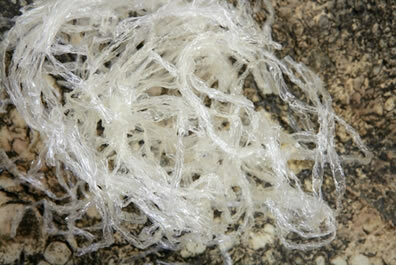Bioethanol is a biofuel produced from the fermentation of biomass and/or the biodegradable fraction of waste.
The text Algae Biodiesel showed that an alternative that has proven to be very advantageous is the production of biodiesel from algae. But they can also be used as raw material to obtain bioethanol, and it is even possible to produce bioethanol and biodiesel simultaneously.
The use of algae for this purpose is part of the third generation of bioethanol, the first being from sugarcane or corn, and the second from plant cellulose.
Algae can be used to produce bioethanol because they (mainly macroalgae species: Sargassum, Glacieria, Prymnesium parvum and Euglena gracilis) are rich in polysaccharides (types of carbohydrates such as starch and cellulose) and have a thin cell wall.
The production of bioethanol from algae is basically through the fermentation of its sugars. However, in detail, it follows the following steps: first, the mentioned species are cultivated through of aquaculture, then they are harvested and decomposed, breaking the cell walls and releasing the polysaccharides. The starch is saccharified and, finally, microorganisms, such as yeasts and bacteria, are used to carry out the fermentation of the decomposing biomass. In this way, ethanol is produced and separated from the rest of the solution.
Since biodiesel is produced from the oleaginous content of algae, these lipids can first be removed and used for produce biodiesel, while carbohydrates that remain in the biomass, such as starch and cellulose, undergo fermentation and produce the bioethanol.

In the aforementioned text, it was shown that in the cultivation of algae it is necessary to provide, among other things, carbon dioxide (CO2) to perform photosynthesis. Thus, you can also take advantage of the CO2 produced in the fermentation of bioethanol production to feed biomass production.
However, some obstacles still need to be overcome, among them is the fact that others products from algae, such as collagen and agar-agar (image below), have greater value than bioethanol.

But the benefits are also huge:
* It is a renewable resource;
* Cause to pollution reduction atmospheric by CO emission2;
* It has high yield, since algae have a highly concentrated type of sugar, proving to be a rich biomass;
* The algae practically are not used as food, as with sugarcane, corn, beetroot and wheat;
* grow fast;
* No need for high extensions of land to be cultivated, contrary to what happens with sugarcane and corn.
This biofuel still needs to be approved and validated by the National Petroleum Agency (ANP), but there is a project to assemble until the last 2013 quarter a biodiesel and bioethanol production plant with marine algae in the state of Pernambuco, in the Northeast, and the forecast is that operate in 2014. the CO2 that will be used in the cultivation of algae will be removed from the chimneys of the industry that processes sugarcane to produce regular ethanol, reducing emissions of this gas to the environment. If that happen, Brazil will have the first plant of this type in the world.
By Jennifer Fogaça
Graduated in Chemistry
Source: Brazil School - https://brasilescola.uol.com.br/quimica/bioetanol-algas.htm
